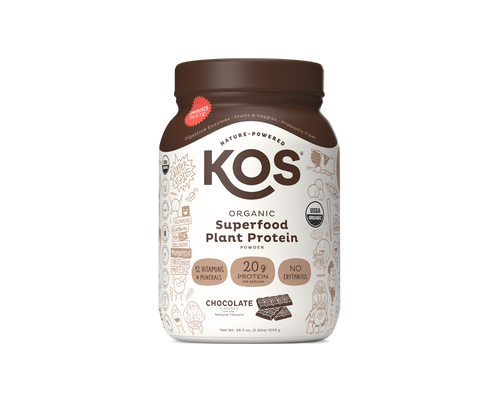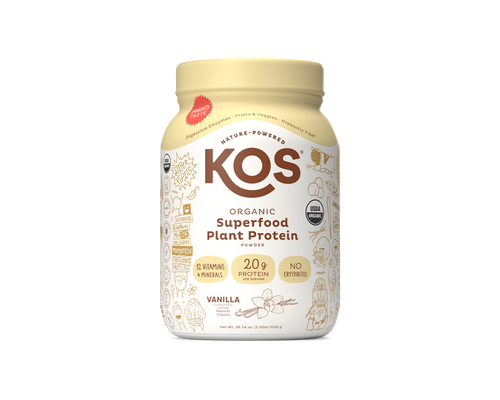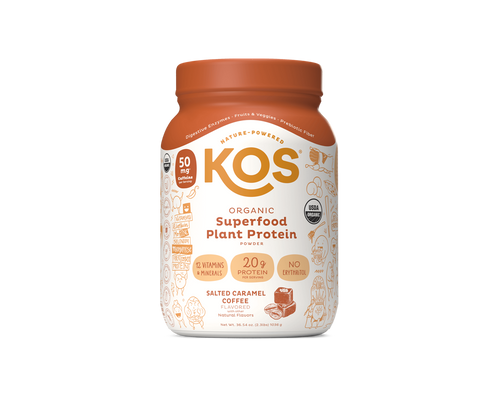Table of Contents
Baking Without Flour: Can You Substitute Protein Powder for Flour?
For many home bakers, flour is a key part of the recipe. But what if your pantry is running low on flour, and you crave a batch of freshly-baked treats? Is there an alternative that can replace flour and still create delicious treats? The answer is yes! Protein powder can be used as a substitute for flour when baking.
So whether you're looking for an alternative due to dietary restrictions or just want something different from your usual baking routine—swapping out regular flours for protein powder is definitely worth trying at least once!
Let’s find out just how protein powder can be used to replace flour and how to use protein powder in recipes.

What Can I Use Instead of Flour for Baking?
For many people, the thought of baking without flour seems impossible. Flour is, after all, a key ingredient in most baked goods. But what if you're gluten-free or you’re simply looking to replace all-purpose flour with healthier, unrefined options?
Before you get discouraged, know that plenty of alternatives can be used in place of wheat flour when baking. Here are some of the best:
- Oat flour is a great option because it is made from—you guessed it again—oats that have been ground into a fine powder and contain more fiber than regular wheat flour. The slightly nutty taste goes well with baked goods such as oatmeal cookies, protein bars, and other healthy treats.
- Almond flour is made from ground almonds and still contains all of the healthy fats and nutrients found in whole almonds. It is popular for gluten-free and low-carb baking and is ideal for cakes, cookies, and muffins.
- Coconut flour has more fiber than regular wheat flour and is also gluten-free — perfect for those who are sensitive to gluten! It has a slightly sweet flavor and is perfect for tropical-themed baked goods like cookies and muffins.
- Protein Powder - Sure, protein powder may not seem like the most obvious substitute - and your friends might question your baking skills - but it could actually be the key to some out-of-this-world recipes. With its unique texture, delicious flavor, and added nutritional benefits, protein powder may become your new go-to for all culinary creations. And who knows? Maybe soon enough, protein pancakes on a Saturday morning will become as common as cookies on a Monday night.
Is Protein Powder the Same as Flour?
We've all been there. You're in the kitchen, halfway through making your famous chocolate chip cookies, when you realize you're out of flour. You rummage through the pantry, but alas, no grain of flour can be found. So, you substitute protein powder for flour, thinking it's basically the same thing. But is it? Let's find out.
At first glance, flour, and protein powder may seem like they could be interchangeable. After all, they're both powders that are used in baking. However, upon closer inspection, it's clear that these two ingredients are somewhat different. Here are some key ways flour and protein powder differ:
- Flour is made from wheat, while protein powder is made from soy, rice, or whey;
- Flour is a complex carbohydrate, while protein powder is a simple protein;
- Flour is used to add structure and bulk to baked goods, while protein powder is mainly used to add protein content;
- Protein powder dissolves more easily than flour
Given these differences, it's clear that flour and protein powder are not, in fact, the same things. But what does this mean for your baking?

How Does Protein Powder Affect Baking?
Have you ever wondered how those fitness enthusiasts get their cakes and cookies to be so jacked? The answer, my friends, is protein powder. Protein powder can be a great way to add some extra protein to your diet, but it can also be a bit of a minefield in baking.
That said, here’s a little guide on how to add protein powder to baked goods and have yourself some of those dewy cookies too.
- Don’t Skip The Flour Completely - Although you can replace part of the flour with protein powder, you should never replace more than 1/3 of the flour with protein powder. Why? Well, anything more could result in an undesirable texture or flavor – you certainly don’t want that.
- Add Extra Leavening Agent - Protein powder can make baked goods dense, so adding an extra leavening agent like baking soda or baking powder is important. This will help your baked goods rise and prevent them from being too dense. Just be careful not to add too much, or your goodies will become too light and fluffy. We told you baking is a science!
- Don’t Overmix the Batter - Overmixing the batter will result in tough, rubbery baked goods. The solution? When you’re adding the wet ingredients to the dry ingredients, mix until just combined. Then, stop mixing.
- Add Some Moisture - To prevent baked goods from drying, you should always add moisture to your recipes. As a rule of thumb, you need around 1/4 to 1/2 cups of wet ingredients for 1 cup of dry ingredients.
- Don’t Over Bake - As we stated earlier, protein powder is not a substitute for flour but can only be added as a partial replacement. Baking with protein powder requires lower temperatures or shorter baking time. So next time you’re craving some of those delicious muffins, remember to decrease the baking time and temperature.
- Bonus tip – Some protein powders contain a lot of added sugar, which will ruin the texture of your recipe. For healthier recipes, use protein powders that do not contain any added sugar, like vegan, plant-based protein powders. Incorporating vegan protein powder into your baking can add an extra boost of nutrition and texture. But remember, since plant-based products are highly absorbent, less flour or more plant-based milk will be needed for the perfect doughy consistency.
Conclusion
If you follow these tips on how to use protein powder in recipes and if you add it sparingly, then partially substituting flour with protein powder..won't be too much of an issue! In fact, using protein powder instead of regular flour will result in treats with an added nutritional boost from all the extra amino acids found in the protein powder itself! Also, consider using alternatives such as almond or coconut four - these carry much more protein and nutrients than your typical wheat flour!
So the next time you're in a pinch and need to substitute one for the other, you'll know exactly what to expect. Bon appetit!

FAQs
What Can I Use Instead of Flour for Baking?
For many people, the thought of baking without flour seems impossible. But what if you're gluten-free or you’re simply looking to replace all-purpose flour with healthier, unrefined options? From oat, coconut, and almond flour to part flour, part protein powder mix, get ready to explore new ways of adding flavor while enjoying healthier options when baking.
Is Protein Powder the Same as Flour?
While they might look similar at first glance, these ingredients differ in several ways. Flour is composed of complex carbs from wheat, while powders are made of simple proteins like soy. Protein powder dissolves quickly, too, so it can be used for creamy everything—from smoothies to sauces. So next time you're crafting something dessert-worthy from scratch, remember there’s a difference between flour and its healthier sibling -protein power.
How Does Protein Powder Affect Baking?
Unleashing the power of protein powder in baking doesn't have to be a guessing game! To make sure your treats come out perfectly each time, remember these tips: don’t forget about flour, give them an extra boost with leavening ingredients, avoid overmixing and overcooking to keep things light - oh yeah – and add some moisture for deliciousness galore!






